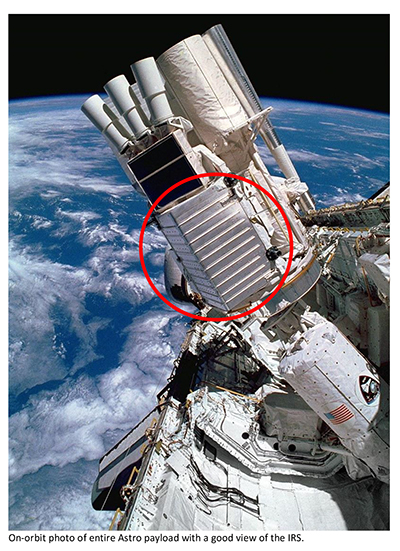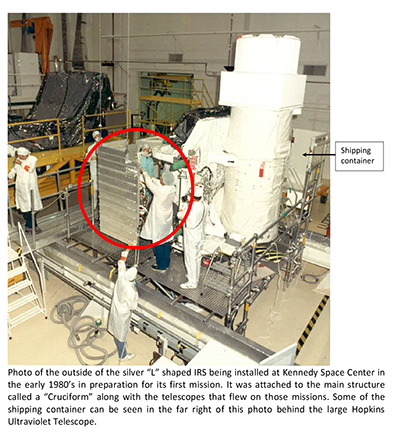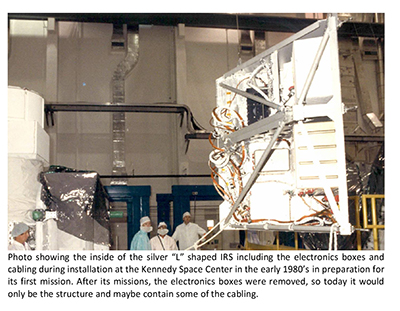 Space News space history and artifacts articles Messages space history discussion forums Sightings worldwide astronaut appearances Resources selected space history documents |
If you have previously registered, but forgotten your password, click here.
From the Astro Restoration Project (via Facebook): | ||||||||
| Robert Pearlman | The Astro Restoration Project is seeking help seeking part of the payload: We are contacting your organization in regards to potentially helping us locate a missing element of the Astro payload called the "Integrated Radiator System (IRS)". This is a mechanical structure that was used for housing various avionics boxes on a large "L" shaped structure with a silver reflective tape covered radiator utilizing heat-pipes for passive thermal control (see attached graphics/pictures).  | |||||||
| mehaddad | We are still looking for the IRS hardware and hoping someone out there has a lead or may have seen it. Thank you. | |||||||


